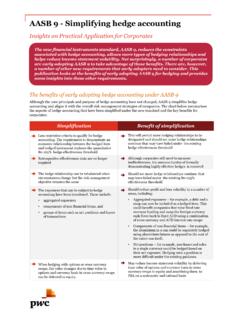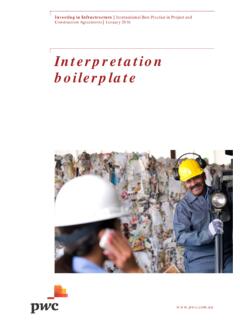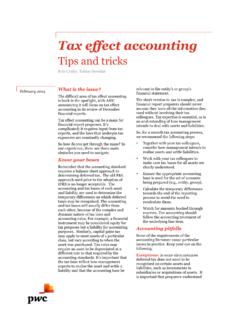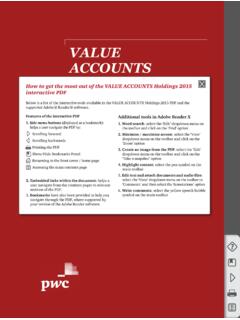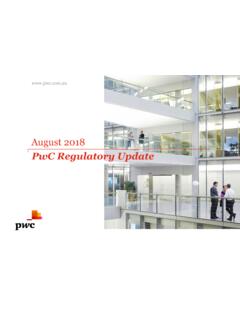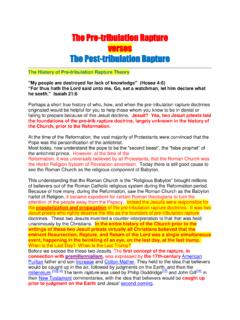Transcription of 223396 The Australian Beef Industry The Basics V4
1 The Australian beef Industry The Basics The Australian beef Industry From family farm to international markets Key points Australia is a relatively small beef producer on a global scale. Though our small population means that consumption is low which allows Australia to export a significant volume of beef each year. Australia exports to a number of different markets, the largest of these is Korea, Japan and America. The Australian beef Industry can broadly be divided into the northern and southern production systems. Australian cattle producers use different breeds depending on their ability to meet market specifications and handle climatic conditions.
2 The Australian cattle Industry is disparate and fragmented; this is most pronounced in the southern production zone. There are many different parties involved in the beef supply chain. Corporate ownership is prevalent in the northern production zone and the processing and feedlot Industry is quite concentrated. The disease free status and traceability of the Australian beef Industry provides a competitive advantage. Increasing international demand for protein means that the future of the Australian beef Industry is bright. Contents Key points i 1 Overview of the Industry 1 2 What and where 2 Map of production 2 What is produced where and the markets of each 2 3 Challenges and advantages 3 4 Australian beef production and its markets 4 5 The supply chain and major stakeholders 5 Pre- production 5 Cattle Production 5 Feedlots 6 Processors 6 6 Mechanics of cattle production 7 7 Industry bodies 8 Meat and Livestock
3 Australia 8 Cattle Council of Australia 8 8 What the future of the Industry may hold 9 Appendix A PwC and agribusiness 10 The Australian beef Industry PwC 1 1 Overview of the industryThe original cattle bought to Australia with the first fleet in 1788 were intended to assist with development of the country. However, they escaped and their numbers increased rapidly until cattle farming became commercial. This commercialisation was strengthened by the gold rushes of the 1850 s where demand for beef in inland areas increased greatly. One person who profited from this was the great Sir Sidney Kidman who originally opened a butcher shop and later became the largest landholder in the world, at that time.
4 Landholders such as Kidman walked cattle vast distances to market and pastures. Originally many of these cattle perished as they were unable to handle Australian conditions. After years of animal and breed selection animal survival is much higher as different cattle breeds are used depending on their survivability. Today, Cattle farmers in Australia collectively run 28 million cattle across 200 million hectares. The number of cattle in Australia makes it a relatively small producer on a global scale. However, due to its small population, Australia exports around 60% of produce making it the world s second largest beef exporter behind Brazil.
5 Key facts about the Industry Herd size 28 million head Percent exported 60% beef Exports $5 billion Live Exports $600 million Producers 40,000 Herd size 28 million head Percent exported 60% Australia prides itself on producing superior quality beef that is free from diseases. beef quality is determined by the size of the cuts produced from an animal and the marbling of the beef . The quality of product from Australian beef can be broadly segregated based on the breed of animal. Bos Indicus cattle are generally selected by northern producers due to their hardiness, tick resistance and ability to cope with heat. The beef produced from these animals is typically of lower quality than beef produced from Bos Taurus animals.
6 This strain of animal are generally used in southern production systems due to their ability to produce quality beef . Typically, the beef from Bos Indicus cattle are either exported live to destinations such as Indonesia or are fattened and processed in southern regions. Whereas Bos Taurus animals are typically fattened processed and then consumed domestically or exported to premium markets such as Japan. A variety of breeds are used by Australian producers. Famous Bos Indicus breeds include the Brahman and the Santa Gertrudis. Meanwhile notable Bos Taurus breeds include the British Angus and Hereford together with the French Charolais.
7 The Industry is continually researching ways to improve efficiencies of production. This has allowed the Industry to maintain profitability in a situation where input prices are increasing. The future of the Industry is assisted by the fact that Australia has a reputation for producing high quality beef that is disease free. The Australian beef Industry PwC 2 2 What and where Map of production Source: Australian Bureau of What is produced where and the markets of eachNorthern cattle producers Northern cattle producers account for 75% of farming land in Australia dedicated to beef . Despite this they account for just under half of the national herd.
8 Cattle in the northern region typically forage for feed over sprawling properties. beef from these cattle is of lower quality compared to southern beef . Thus the northern area targets the Asian market through live exports. Alternatively, cattle are sent south where they are fed grain before slaughter. At which point, the beef is boxed and sent to countries such as America as hamburger meat. Southern Cattle producers Farms in southern areas are generally more intensive then their northern counterparts. Farmers in this area generally run European and British breeds which are kept for their ability to gain weight and produce favourable quality meat.
9 After being slaughtered at varying ages, meat from these cattle is typically sold into high value markets. These include; Korea, Russia and Japan. The Australian beef Industry PwC 3 3 Challenges and advantagesThe Australian cattle Industry operates in a liberalised environment. This unilateral trade liberalisation has forced the Industry to compete in international markets against producers who are heavily subsidised. As a result of this, Australian producers have invested significant amounts in productivity improvements. These have come from genetics, pastures and marketing. As a result of the efficiencies achieved by many Australian producers, the Australian cattle Industry is in a strong position to maintain profitability.
10 Furthermore, this strength will allow the Industry to embrace and capitalise on the opportunities that will present themselves in the upcoming years. Reliance on a relatively small number of export markets gives rise to significant challenges for the Industry . This was seen in 2011, when the Government suspended live cattle exports to Indonesia. The suspension of trade to this market threatened the future of many northern cattle producers. In the short time that the suspension was imposed it did not appear as if the Industry could easily access alternative export markets. A major strength of the Australian beef Industry is its disease free, clean and green image.
